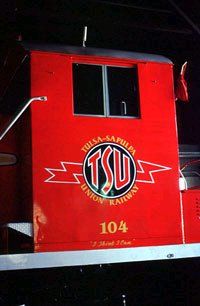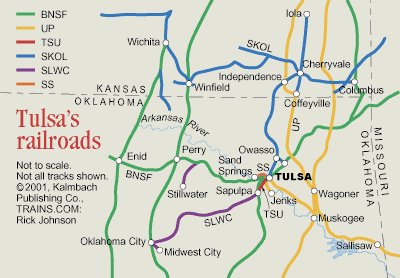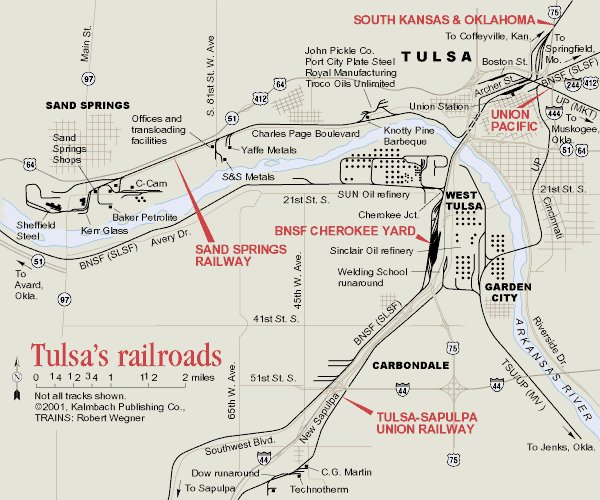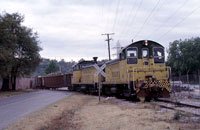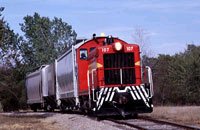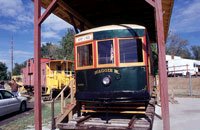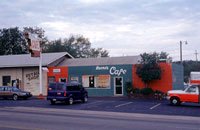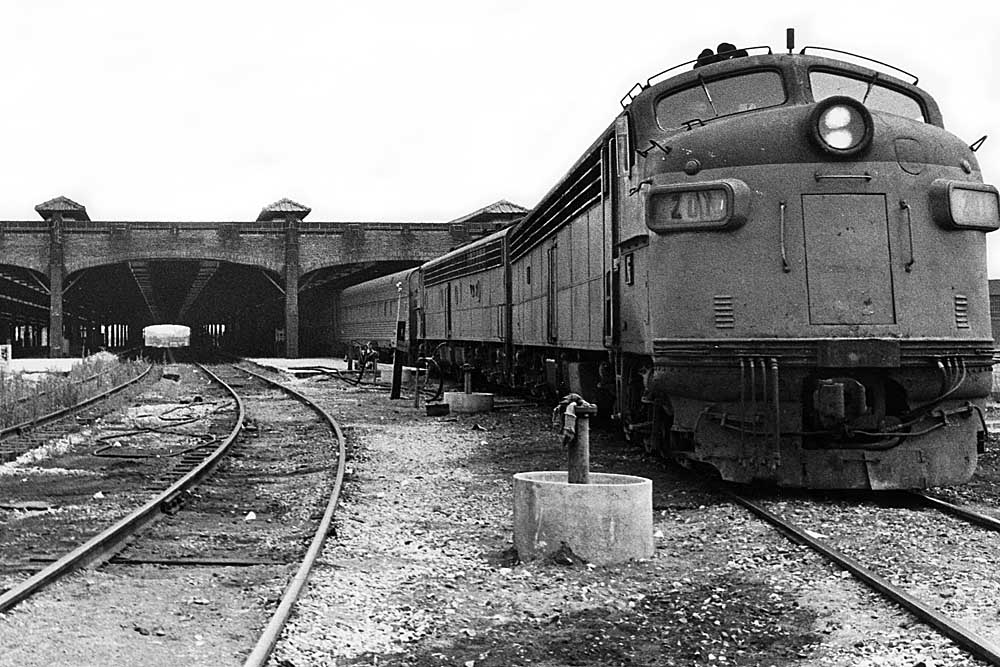Remarks:
BNSF is the major player in Tulsa, operating 30-40 trains a day over three ex-Frisco routes that converge on Cherokee Yard, the city’s largest rail yard.
Lines from St. Louis and Memphis join at Springfield, Mo., the east end of the Cherokee Subdivision, which runs west 187.2 miles to Cherokee Yard. Trains from Kansas City join the Cherokee Sub at Afton, Okla.
Just north of Cherokee Yard is Cherokee Junction, where the Avard Subdivision swings west, providing a 176.3-mile connection to BNSF’s Chicago-Los Angeles Transcon at Avard, Okla.
The Creek Subdivision runs south from Cherokee Yard, passing through Sapulpa and continues on to Madill, Okla., 175.7 miles, part of a route for trains to and from Dallas/Ft. Worth.
The majority of BNSF traffic through Tulsa is East-West, concentrated on the Cherokee and Avard Subs. Eastbound trains approaching Tulsa on the Avard Sub contact the Tulsa yardmaster for yarding instructions.
Radio frequencies:
Cherokee Sub – 160.920 (AAR 54)
Avard Sub – 161.385 (AAR 85)
Creek Sub – 161.160 (AAR 70)
Cherokee Yard yardmaster – 161.100 (AAR 66)
Hump – 160.500 (AAR 26) and 160.830 (AAR 48)
Trimmer – 160.800 (AAR 46), 160.860 (AAR 50), 160.950 (AAR 56), 160.980 (AAR 58)
Car department – 160.710 (AAR 40) and 161.250 (AAR 76)
Engine shop – 160.725 (AAR 41)
Sun Oil refinery, plant switching – 160.890 (AAR 52)
Union Pacific Railroad
Remarks:
Tulsa sits at the end of Union Pacific’s Tulsa Subdivision, which runs 38 miles east to Muskogee, Okla. A transfer run operates 6 days a week, leaving Muskogee in the morning with cars for BNSF, Sand Springs Railway, Tulsa-Sapulpa Union, and South Kansas & Oklahoma.
Radio frequencies:
160.410 (AAR 20) and 160.470 (AAR 24)
Reporting marks: SS
Major commodities: scrap iron, steel, silica sand, pulpboard, chemicals, petroleum products, scrap paper, plastic, lumber
Remarks:
Provides local service on a 5-mile line between Sand Springs and Tulsa, with 32 miles of track. The railroad’s main customer is owner Gerdau Ameristeel, which in 2006 bought Sheffield Steel, operators of a steel mill in Sand Springs. A switching crew goes on duty each morning in Sand Springs, working the line’s customers and the railroad’s warehouse and 8-acre transloading facility. Around midday, the train arrives in Tulsa, where cars are interchanged with BNSF, UP, and South Kansas & Oklahoma.
Gerdau Ameristeel has its own intraplant rail operation that uses two switch engines. The mill produces an assortment of steel bars and steel billets.
Radio frequency:
160.230 (AAR 08)
Roster:
100 SW900 EMD 1956
101 SW900 EMD 1956
102 SW900 EMD 1956
South Kansas & Oklahoma Railroad
Reporting marks: SKOL
Major commodities: grain, flour, cement, aggregates
Remarks:
South Kansas & Oklahoma is a short line railroad providing freight service on some 290 miles of trackage spun off by Santa Fe in 1990. The railroad is owned by shortline conglomerate Watco Companies and shares its headquarters in Cherryvale, Kan., with sister railroads South East Kansas and Stillwater Central.
From its hub in Cherryvale, five SKOL lines spread across southeast Kansas, including a line running south through Independence, and Bartlesville, Okla. to Tulsa. North of Tulsa, an 8-mile spur branches off at Owasso to serve the Tulsa Port of Catoosa.
SKOL serves the Tulsa area with two daily locals, operating from the railroad’s yard in Owasso. One local job runs to the port. The other local carries interchange traffic for BNSF, UP, and Sand Springs at Tulsa, switching customers en route. Operations north of Owasso to Cherryvale are sporadic.
Radio frequencies:
160.785 (AAR 45) – Road
160.845 (AAR 49) – Switching
Stillwater Central
Remarks:
Another Watco-owned short line, the Stillwater Central operates two disconnected lines in northeast Oklahoma owned by the state. Most operations occur on the ex-Santa Fe Aggie Sub between Stillwater and a connection with BNSF at West Pawnee. Stillwater Central also has operating rights on the 97-mile ex-Frisco Sooner Sub, linking Sapulpa and Oklahoma City. SLWC trains on the Sooner Sub are extremely rare, although the line occasionally hosts detouring BNSF trains between Tulsa and Oklahoma City.
Radio frequencies:
160.785 (AAR 45) – Road
160.845 (AAR 49) – Switching
www.tsurailway.com
Reporting marks: TSU
Major commodities: silica sand, pulpboard, limestone, soda ash, plastic resin, steel plate, steel boilers, glass bottles
Remarks:
A 10-mile short line linking the cities of Tulsa and Sapulpa. A crew goes on duty at Sapulpa 6 mornings a week, interchanging cars with BNSF then switching the Saint-Gobain Glass plant. Around midday, the train heads north to Tulsa, switching customers en route and interchanging cars with UP. At Tulsa, the train may work a 12-mile branch to Jenks owned by Union Pacific, roughly paralleling the west bank of the Arkansas River. 95 percent of the railroad’s traffic is inbound loads.
Radio frequencies:
161.070 (AAR 64) – Ch. 1 General operations
160.815 (AAR 47) – Ch. 2 General operations
Roster:
101 SW1 EMD 1940 (ex-Wabash)
102 SW1 EMD 1947 (ex-Wabash)
104 SW9 EMD 1952 (ex-BN)
107 SW7 EMD 1950 (ex-BN)
108 SW1200 EMD 1962 (ex-Soo)
701 East Dewey St.
Sapulpa, OK 74067
(918) 224-1515
www.sapulpatrolley.org
While in Sapulpa, you can also visit the Sapulpa Trolley and Rail Museum (STAR), an organization dedicated to restoring the Maggie M, a Birney safety car built circa 1919 that ran in service on TSU predecessor Oklahoma Union Railway. The car was donated to STAR in 1997 and was cosmetically restored by museum volunteers. Check the web site for hours of operation.
Tulsa Port of Catoosa
5350 Cimarron Road
Catoosa, OK 74015
www.tulsaport.com
Remarks:
Five miles from Tulsa, the Port of Catoosa – the country’s most inland port – lies at the head of the McClellan-Kerr Arkansas River Navigation System, a 445-mile waterway linking Tulsa with the Mississippi River. Five major terminals handle commodities such as petroleum, chemicals, molasses, fertilizer, steel, grain, and containers. Currently, 50 businesses lease space on the port’s 2,000 acres.
The port has its own railroad, with two switch engines serving customers on 13 miles of railroad track. BNSF and South Kansas & Oklahoma serve the port directly, providing outside rail connections.
Radio frequencies:
464.600, 469.600 – Ch. 1 Administration
464.957 – Ch. 2 Intra-plant switcher
Hickory House BBQ
626 North Mission
Sapulpa OK 74067
(918) 224-7830
Knotty Pine Barbecue
3301 West 5th. Street
Tulsa, OK 74127
(918) 584-0171
Norma’s Diamond Café
408 North Mission
Sapulpa, OK 74067
(918) 224-5798
For a complete list of Tulsa’s barbecue restaurants, log onto:
www.bestoftulsa.com/yellowpages/restaurants_barbecue.shtml.





